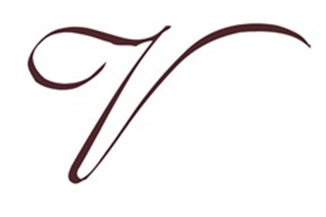
The bride lifts up her veil when voraciously consuming her first vintage vino and vanilla icecream.
~
The one element that makes a bride a bride, over any other formal occasion, is the veil. While a bride today may choose other options, a veil is still the most popular choice.
There are many different elements that determine a design for the veil – cut, shape, layers (or tiers), your gown style, hairstyle and body shape.
A veil can be placed on the crown of the head, towards the back and at the back and depends on your hairstyle and face shape. Most veils will need to be attached with a headpiece such as a comb, wreath, headband or tiara.
Veil Lengths
Birdcage
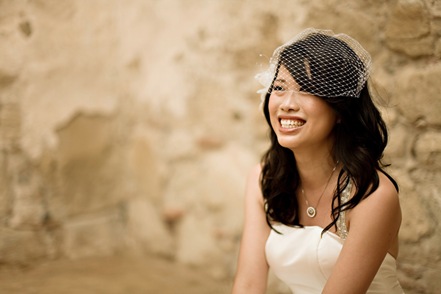
Photo by Leigh Miller Photography
The birdcage veil is becoming a popular choice amongst brides who may not want a full veil but still want the elegance and mystery of a veil. It can tie in with a vintage look and can be worn on the back or front of the head.
Flyaway
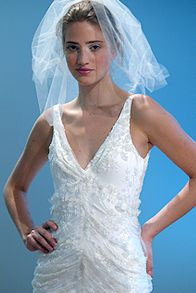
Elizabeth Filmore from brides.com
Not one to be worn over the face, the flyaway veil brushes the tops of the shoulders and is made from more than one layer of fabric to create a bridal look. Perfect for an added sense of drama or paired with a tea length gown for a fifties look.
Blusher
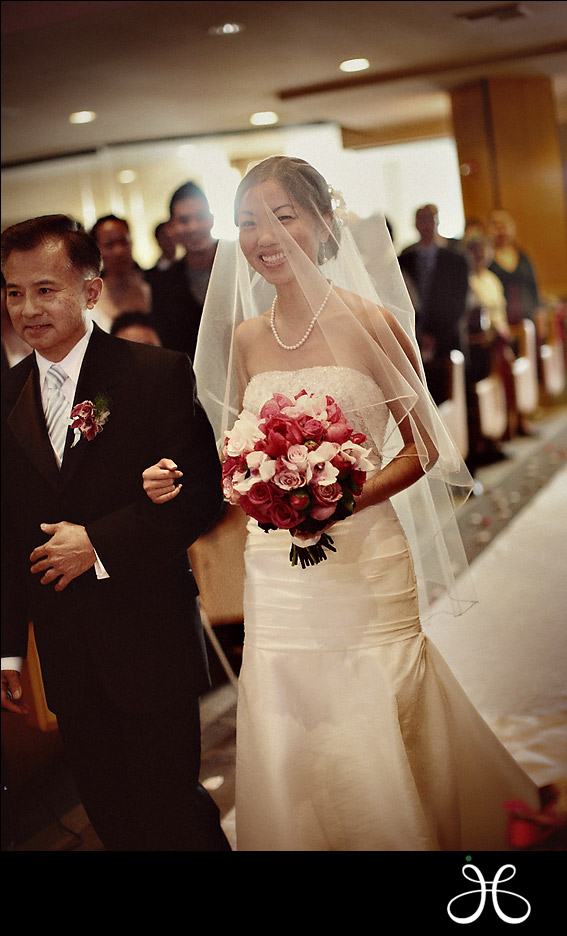
Photo by Jessica Claire
The blusher is a short veil of two or more layers. It usually ends between the bride’s collarbone and bust, and a layer is worn over the face and is normally lifted before or after the ceremony for the newlyweds first kiss. The blusher can also be replaced by a longer length of your veil being pulled over your face.
Elbow
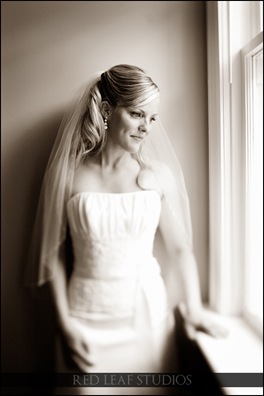
Photo by Red Leaf Studios
This length reaches the bride’s elbows and creates a soft frame for the upper body and face.
Fingertip
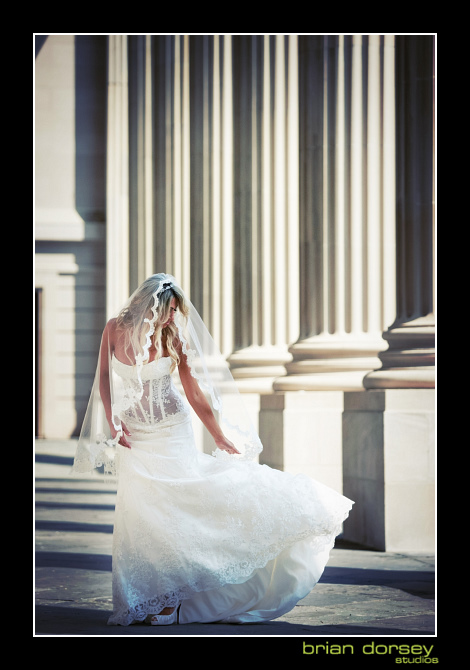
Photo by Brian Dorsey Studios
This style is the most common veil length. Touching the brides fingertips, the veil hags in soft folds and adds to the elegance of the dress.
Waltz
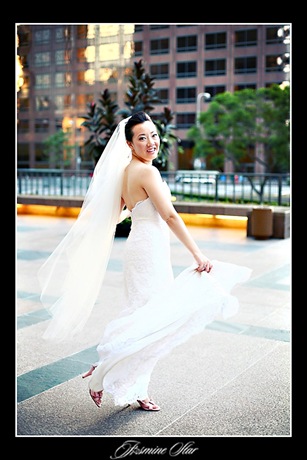
Photo by Jasmine *
The waltz length comes to around mid calf and is a graceful addition to the bridal outfit. Also known as ballerina or walking length, it gives the bride a longer veil without the worry of tripping or damaging the veil by stepping on it.
Chapel
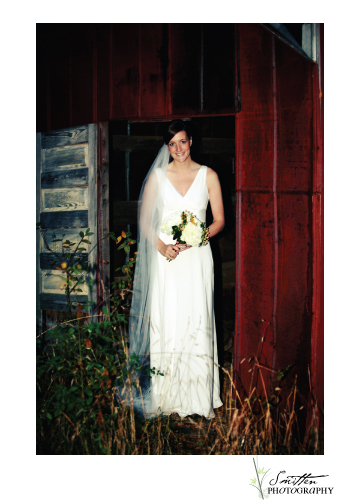
Photo by Smitten Photography
The chapel length veil trails behind the bride as she walks. It hits the floor or bottom of the bride’s gown.
Cathedral
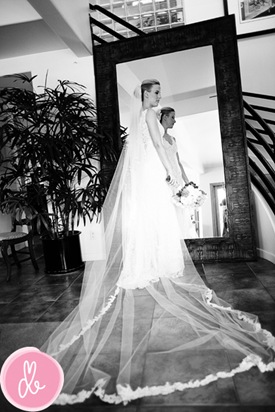
Photo by Drew B
A cathedral length veil is as long as bride wants it to be and creates a sea of tulle or lace behind the bride as she walks. Usually worn at formal weddings.
Mantilla
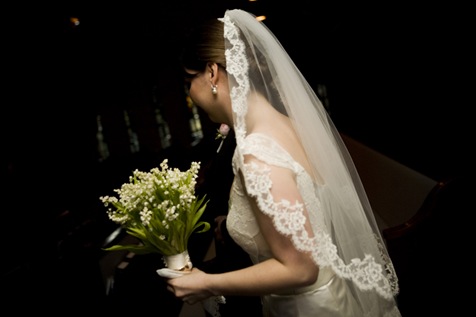
Photo by Laura Kay Photo
The mantilla veil originated from Spain. Its distinguishing features are it’s decoration (lace) and placement on the head. The veil is not placed at the
back of the head, but is draped over the crown. Its length and placement means the veil falls over the shoulders and down the back. The veil is shaped as one large circle.
A veil can be a combination of lengths. A two tier veil may be a good choice for a bride who is not wearing the veil over her face- she may remove he longer layer for the reception. A three tier veil allows the bride to remove the shorter part and the long part. Of course veils can be removed all together for the reception and replaced with a crystal hair clip, fresh flowers or just leave the headpiece in place.
A veil’s look can also be added to with its edging:
- raw edge
- lace
- satin binding
- ribbon
- pencil edge (a thin stitched edge)
A veil is often adorned with a decoration matching the bride’s gown:
- crystals
- embroidery
- polka dots
- lace


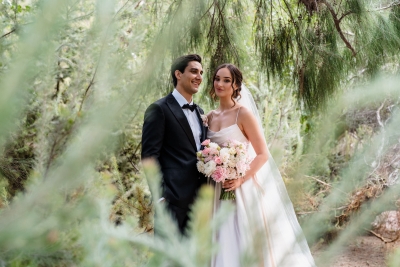
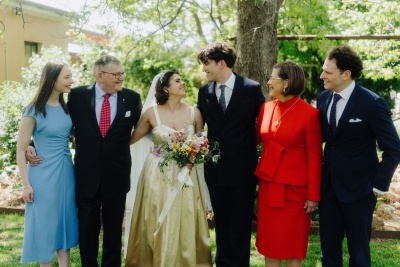
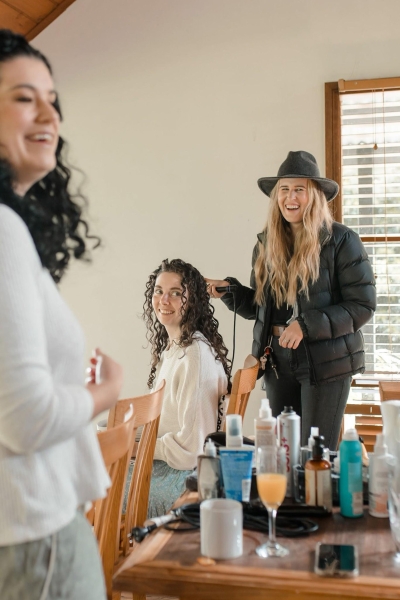

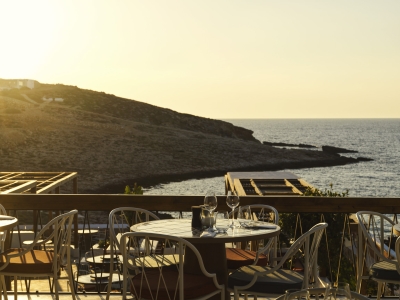



this post is so illustrative and helpful…and packed with pretty pictures!! love it!
Veils are lovely – but I opted against one. I had beautiful fresh flowers in my hair instead. My dress designer used a lot of fine silk tulle in my dress and the addition of a tulle veil would have overwhelmed the look. I love the look of a veil on other brides, but didn’t miss not having one myself!
I LOVE when my brides wear cathedral length veils! They are so much fun to photograph! Fabulous post as always my Aussie friend!
Thank you for this post! I always wondered what the differences were 🙂
Great post on wedding veils. I love to photograph my brides in the longer length veils. They look great in photographs.